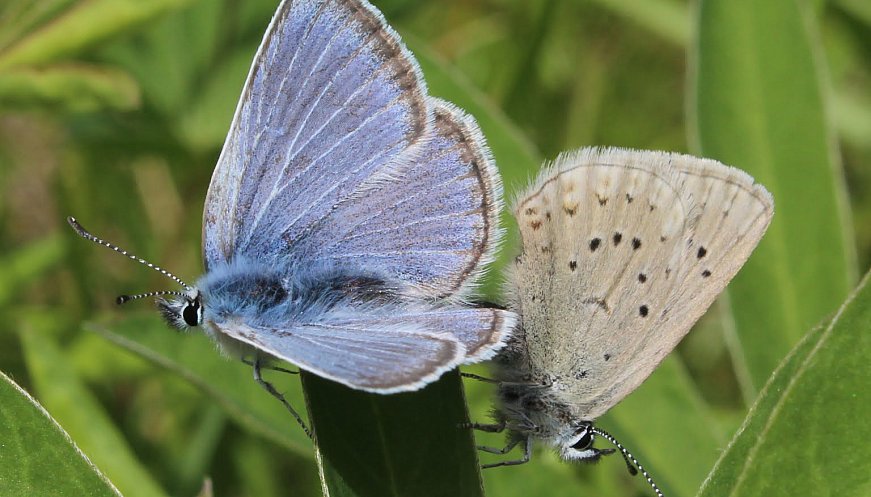 Photo: Institute for Applied Ecology
Photo: Institute for Applied Ecology
In Oregon’s Willamette Valley, scientists, farmers, incarcerees, government agencies, nonprofits and tribal nations have been working together to revive Fender’s Blue butterfly, which has been on the endangered species list since 2000. This delicate, sapphire-winged butterfly was thought to be extinct around 1940. When it was re-discovered in the late 1980s, scientists started to study elements that are critical to its survival. They discovered that Fender’s Blue relies on Kincaid’s lupine, its host plant, for food and shelter. Although native to upland prairies in the Willamette Valley, Kincaid’s lupine and its prairie habitat came under threat due to agriculture, urban development and the displacement of the Kalapuya people who preserved the health of the prairies through regular, prescribed burning practices. Today, in partnership with the Confederated Tribes of Grand Ronde, which includes the Kalapuya, the U.S. Fish and Wildlife Service burns part of the prairies at Baskett Slough National Wildlife Refuge every year. Moreover, a conservation nonprofit called Institute for Applied Ecology has been working with incarcerated individuals in the Sustainability in Prisons Project to produce Kincaid’s lupine seeds and plants on a large scale in a field inside the Oregon State Correctional Institution. Private landowners in the Williamette Valley have also joined the conservation efforts. They understand that the survival of Fender’s Blue is intimately tied to the recovery of the lupine, the health of the prairie, and the care of humans. “The population here is precarious,” Jim Merzenich of Oak Basin Tree Farm said. “The worst thing that could happen to these meadows is for people to just turn around and ignore them. You’d lose your lupine, lose your butterflies.”
More:














